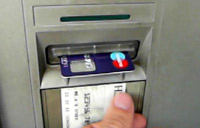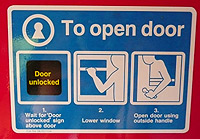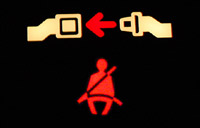Bonjour / Goeiendag to visitors from Design for Persuasion: while you’re here, you might also like to download a free poster [PDF] which has 12 of the Design with Intent patterns on it in a handy reference form. Thanks for stopping by!
The Errorproofing Lens represents a worldview treating deviations from the target behaviour as ‘errors’ which design can help avoid, either by making it easier for users to work without making errors, or by making errors impossible in the first place.
This view on influencing behaviour is often found in health & safety-related design, medical device design and manufacturing engineering. More commentary…
Defaults
“What happens if I leave the settings how they are?”
â– Choose ‘good’ default settings and options, since many users will stick with them, and only change them if they feel they really need to (see Rajiv Shah’s work, Thaler & Sunstein and Goldstein at al [PDF article preview] for more detailed examinations of defaults and their impacts)
â– How easy or hard it is to change settings, find other options, and undo mistakes also contributes to user behaviour here


Examples: With most printer installations, the default print quality is usually not ‘Draft’, even though this would save users time, ink and money.
In the UK, organ donation is ‘opt-in’: the default is that your organs will not be donated. In some countries, an ‘opt-out’ system is used, which can lead to higher rates of donation
 This pattern is mainly about constraining user behaviour…
This pattern is mainly about constraining user behaviour…
 but can also enable a user to make the ‘right’ choice.
but can also enable a user to make the ‘right’ choice.
Interlock
“That doesn’t work unless you do this first”
â– Design the system so users have to perform actions in a certain order, by preventing the next operation until the first is complete: a forcing function
â– Can be irritating or helpful depending on how much it interferes with normal user activity–e.g. seatbelt-ignition interlocks have historically been very unpopular with drivers


Examples: Microwave ovens don’t work until the door is closed (for safety).
Most cash machines don’t dispense cash until you remove your card (so it’s less likely you forget it)
 This pattern is mainly about constraining user behaviour.
This pattern is mainly about constraining user behaviour.
[column width=”47%” padding=”6%”]
Lock-in & Lock-out
“This operation cannot be stopped right now”
â– Keep an operation going (lock-in) or prevent one being started (lock-out) – a forcing function
â– Can be helpful (e.g. for safety or improving productivity, such as preventing accidentally cancelling something) or irritating for users (e.g. diverting the user’s attention away from a task, such as unskippable DVD adverts before the movie)

Example: Some websites ‘disable’ right-clicking to try (misguidedly) to prevent visitors saving images.
[/column][column width=”47%” padding=”0%”]
Extra step
“Are you sure?”
â– Introduce an extra step, either as a confirmation (e.g. an “Are you sure?” dialogue) or a ‘speed-hump’ to slow a process down or prevent accidental errors – another forcing function. Most everyday poka-yokes (“useful landmines”) are examples of this pattern
â– Can be helpful, but if used excessively, users may learn “always click OK”

Example: Train door handles requiring passengers to lower the window
[/column][column width=”47%” padding=”6%”]
Specialised affordances
“It only fits one way round”
â– Design elements so that they can only be used in particular contexts or arrangements
â– Format lock-in is a subset of this: making elements (parts, files, etc) intentionally incompatible with those from other manufacturers; rarely user-friendly design

Example: The bevelled corner on SIM cards, memory cards and floppy disks ensures that they cannot be inserted the wrong way round
[/column][column width=”47%” padding=”0%”]
Partial self-correction
“Did you mean…?”
â– Design systems which partially correct errors made by the user, or suggest a different action, but allow the user to undo or ignore the self-correction — e.g. Google’s “Did you mean…?” feature
â– An alternative to full, automatic self-correction (which does not actually influence the user’s behaviour)

Example: eBay self-corrects search terms identified as likely misspellings or typos, but allows users the option to ignore the correction
[/column][column width=”47%” padding=”6%”]
Portions
“That’s the size it comes in”
â– Use the size of ‘portion’ to influence how much users consume: unit bias means that people will often perceive what they’re provided with as the ‘correct’ amount
â– Can also be used explicitly to control the amount users consume, by only releasing one portion at a time, e.g. with soap dispensers

Example: ‘Portion packs’ for snacks aim to provide customers with the ‘right’ amount of food to eat in one go
[/column][column width=”47%” padding=”0%”]
Conditional warnings
“It’s warning me I haven’t put my seatbelt on”
â– Detect and provide warning feedback (audible, visual, tactile) if a condition occurs which the user would benefit from fixing (e.g. upgrading a web browser), or if the user has performed actions in a non-ideal order
â– Doesn’t force the user to take action before proceeding, so not as ‘strong’ an errorproofing method as an interlock.

Example: A seatbelt warning light does not force the user to buckle up, unlike a seatbelt-ignition interlock.
[/column][end_columns]
Photos/screenshots by Dan Lockton except seatbelt warning image (composite of photos by Zoom Zoom and Reiver) and donor card photo by Adrienne Hart-Davis.
____________________
The Design with Intent Toolkit v0.9 by Dan Lockton, David Harrison and Neville A. Stanton
Introduction | Behaviour | Architectural lens | Errorproofing lens | Persuasive lens | Visual lens | Cognitive lens | Security lens
Pingback: Design with Intent | The Design with Intent Toolkit v.0.9
Pingback: Design with Intent | frog design on Design with Intent
Pingback: Design with Intent | Persuasive Lens: The Patterns
Pingback: Design with Intent | Cognitive Lens: The Patterns
Pingback: Design with Intent | Through London with the DwI goggles on